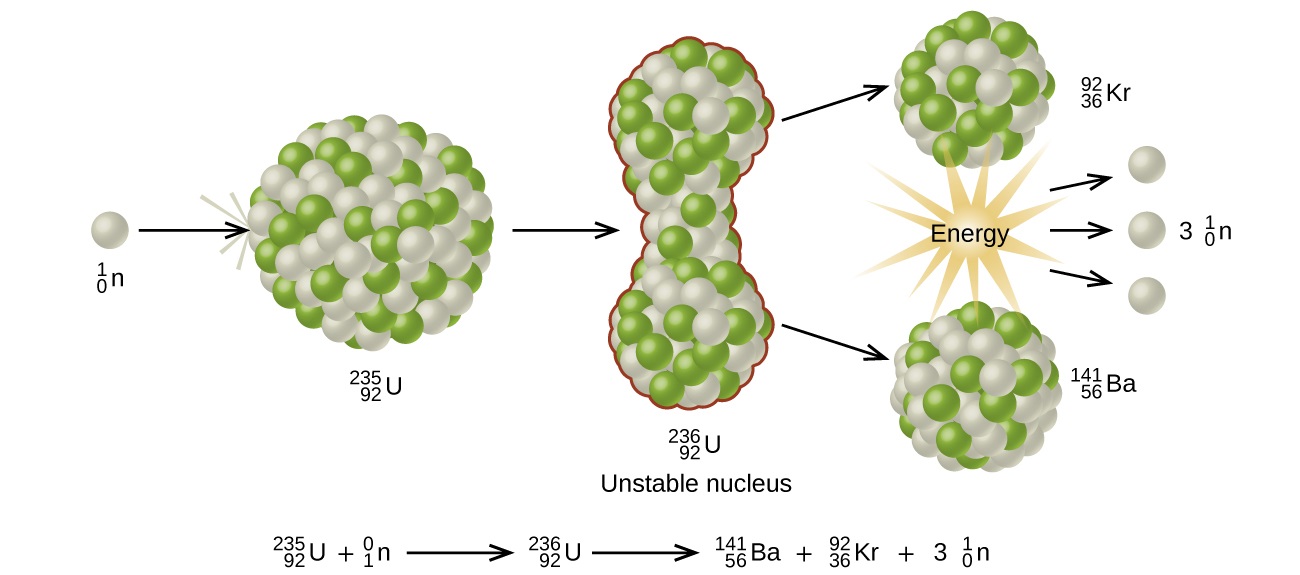

Fission is a naturally occurring spontaneous decay process of heavy isotopes and can also be induced by the absorption of particles, such as neutrons, protons, or photons, under appropriate conditions ( Fig. The extreme deformation of a very large nucleus followed by splitting of the nucleus into lighter nuclei, predominantly two lighter fragments, in conjunction with a large energy release. Delayed neutron emission by fragments allows control of the chain reactions. Prompt neutron emission during fission provides the capability for a chain reaction of fission events. This probabilistic nature of fission implies that each fission event and its resulting mass and energy distributions are different. Isotopes have an independent fission yield, which is a probability that they will be produced in any given fission event. The liquid-drop model of the nucleus provides an effective qualitative and quantitative explanation of fission.Ī typical fission event releases a total of around 200 million electronvolts (MeV) of energy.

The fission process is governed principally by nuclear binding energy and the competition between the attractive nuclear force and the repulsive Coulomb force. A nuclear fission event is the splitting of one nucleus into two or more lighter nuclei fragments.


 0 kommentar(er)
0 kommentar(er)
